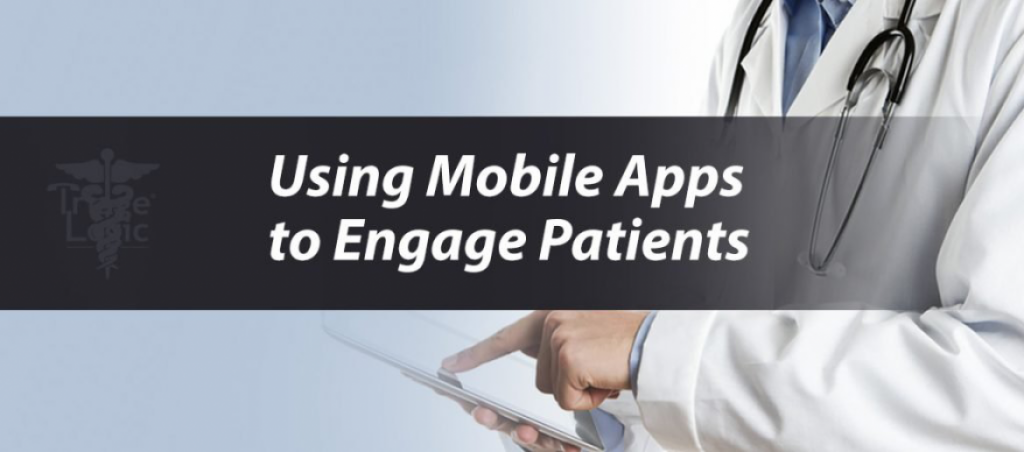Using Mobile Apps to Engage Patients
Telehealth and mobile applications (apps) are changing the way that healthcare is delivered.
A recent Pew Research study[1] found that about 77% of Americans own a smartphone. It is estimated that smartphone users spend about 1.8 hours every day on their devices, and that 89% of that mobile media time is on an app.
Anyone who owns a smartphone has come to rely on mobile apps to quickly access anything from their bank accounts, to social media pages, even to that game that they are addicted to. As the public relies more on technology, the telehealth field has grown and adapted to meet patients’ need to stay connected and in control of their health. Mobile apps are playing a huge role in bridging access from the provider to the patient. However, as with all new technology, medical mobile apps face obstacles and the challenge of regulation.
In recent years, there has been an explosion of patient-centered apps to aid in health and wellness.
Healthcare mobile apps help patients with:
- Connecting to their physician’s office
- Researching health insurance benefits or claims
- Looking up reviews on providers
- Finding urgent care centers and ERs nearby
- Managing chronic disease
- Lifestyle management
- Smoking cessation
- Diagnosis
The Patient Behavior
A key issue for brick-and-mortar providers is to ensure that their patients receive continuity of care with their health. However, with so many outside options available through mobile apps, doctors have to find ways to stay in touch with their patients. Solutions include providing patients with a service, such as a nurse triage on call, to ask questions about their symptoms when the office is closed. In addition, doctors can have their own mobile app to engage customers and improve access to the office for prescriptions and appointments.
Provider Driven Telehealth Apps
There are many times when a provider can use mobile technology on phones or tablets to assist in patient care. Mobile apps can be used to send notifications or events directly to patients, such as reminders for appointments and tests, or even reminders to help with antibiotic compliance[2]. Some mobile apps, such as My24/7Healthcare, even allow patients to send messages to practices requesting appointments and prescription refills. Additionally, some telehealth apps allow providers to virtually extend their hours, by allowing patients to conveniently access the practice and their nurse triage from their mobile app. In sum, a quality mobile app for a practice allows providers to increase engagement with patients, improve patient convenience accessing the office, and extend the hours when patients can get questions about their health symptoms answered.
In another use of mobile applications, patients can use telehealth mobile apps to replace office visits. This is most useful for rehabilitation or post-operative care patients and those with chronic conditions, who require regular follow-up care or monitoring. Many of these patients have transportation issues due to their health conditions. With the use of mobile applications, patients are able to chat or send images of their progress or set-backs, saving patients the time and money it would take to go to the physical office. For example, our new mobile application for patients, called My24/7HealthcareTM allows for communication with patients, as well as telehealth visits with providers.
Finally, Mobile health applications have proven especially beneficial to rural areas[3], with limited access to physical medical facilities. Rural locations tend to have a shortage of specialists. Primary care providers can use mobile technology to access specialists from large institutions to virtually assist in the care of their patients.
Regulation
As with any communication tool with patients, an important consideration is that all communication between patients and providers has to be HIPAA compliant. For example, text messages must be secure and coded, to ensure that only the patient and the provider are able to access the information. In addition, when sharing a family account on a telehealth mobile app one must have a way for the patient to determine what is visible and to whom.
Though many states have passed telehealth coverage laws, there are still many issues with service reimbursement. Currently, there is some controversy over telehealth parity laws, which would require reimbursement by health plans for telehealth services at the same or equal rate as those services performed in person.[4]
Since telehealth mobile apps are a relatively new tool, the medical community is still developing ways to regulate this industry, in order to evaluate and prevent the potential dangers. The US Food and Drug Administration (FDA) has weighed in on which apps requires regulatory oversight and which do not.[5]
Conclusion
Physicians need to acknowledge and embrace telehealth mobile apps, or suffer losing patients to those who are able to integrate the needs of the patient. In this on-demand society, it is important for practices to adapt from the traditional model of healthcare. Telehealth mobile apps have made it easier for the patient to take an active role in their healthcare, while making access to physicians and medical providers more convenient. While mobile technology has changed the way telehealth is being practiced, there is still a lot of data that needs to be examined and adjustments made to the different models to figure out the best approach for the future of healthcare.
About the Author
Dr. Ravi Raheja is the Medical Director of TriageLogic. In addition to being committed to providing quality medical triage services and software to physician practices, clinics, and hospitals, Dr. Raheja is also devoted to lowering healthcare costs in general, by designing a business model to help reduce the rate of unnecessary visits to emergency room. For more information, visit www.triagelogic.com.
[1] Pew Research Center. 2017. Mobile Fact Sheet.
[3] Weinstein R, MD, Lopez A, Joseph B, Erps K, Holcomb M, Barker G, Krupinski E. 2014. Telemedicine, Telehealth, and Mobile Health Applications That Work: Opportunities and Barriers. The American Journal of Medicine (2014) 127, 183-187.
[4] Graham J. 2016. Telehealth Opportunity Or Telehealth ‘Parity’?






